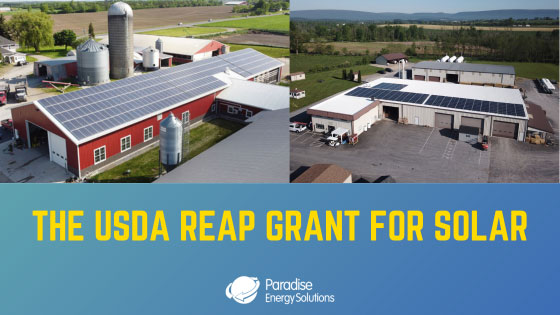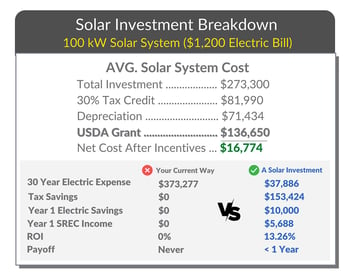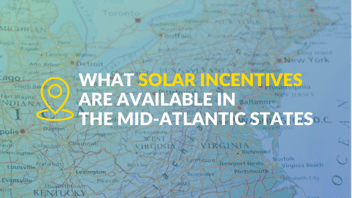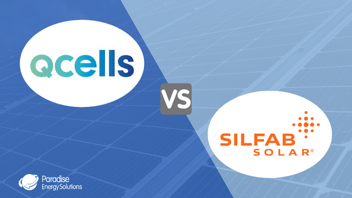How Do The USDA REAP Grant Rounds Work?
Anyone looking to qualify for a REAP Grant has to submit their application in a specified round. A certain portion of the grant’s funding is split between each round. The funding will then be allocated to qualifying businesses and farms through the REAP Grant.
If there are more qualifying systems than the round’s budget can serve, the highest-scoring applications will receive the grants first until the funding runs out. The likelihood of every qualifying applicant receiving their grant amount is entirely dependent on how many systems apply. In the past, it wasn’t a sure bet that you’d receive the grant. But with the additional funds granted to the program, only time will tell how easy it will be to receive the grant.
If you don’t receive the grant in the round you applied in, you are eligible for grants in subsequent rounds. Your application will automatically roll over to other rounds in the same calendar year. For example, if you apply to the Q1 round and don’t receive the grant, your application will automatically be rolled over into the Q2 round.
However, if you did not get in on a 2023 round, you will have to reapply to participate in 2024’s rounds.
Unlike years past, all rounds will be open to projects of all sizes.
How Does USDA REAP Grant Scoring Work?
The scoring criteria for applications have changed slightly for the remaining three rounds in 2024. Your application will be evaluated and ranked based on the following:
- Environmental Benefits (5 points) - You’ll receive points if your project has a positive effect on resource conservation, public health, and/or the environment.
- Energy Generated, Replaced, or Saved (25 points): You’ll receive points depending on how much or how much percentage of energy you’re generating, replacing, or saving.
- Commitment of Funds (15 points) - The higher the percentage of funding for the project you have, the more points you’ll receive.
- Previous Grantees and Borrowers (15 points) - You’ll get the most points if you’ve never received the grant. You’ll receive none if you received this grant less than 2 years ago.
- Existing Business (5 points) - You’ll get points if you meet the definition of an existing business.
- Simple Payback (15 points) - The shorter your system’s payback, the higher the points.
- Size of Request (10 points) - You’ll get points if you request 250,000 or less for RES or $125,000 or less for EEI
- State Director and Administrator Priority Points (10 points) - You can get additional points depending on veteran or socially- or economically disadvantaged status, the type of technology used, geographic diversity, and more.
If you’re interested in learning more about the criteria, check out the USDA’s rubric here.
How Do You Apply for a USDA REAP Grant For Your Solar Installation?
The grant application process is typically done by your solar installer or a third party. However, it does require a fair bit of input from you. This will include providing various financial information, information about the proposed solar energy system, and your approval and signature for multiple documents.
They’ll take on the nitty-gritty work, and they’ll do their best to ensure your application stands a good shot at earning the coveted grant. At Paradise Energy, we have grant writers on staff who have helped over 300 customers secure over $19 million in grant funds for our customers.
The Safer Option: Take the 25% USDA Grant
We expect these six rounds of the USDA REAP Grant will be extremely competitive. If your project likely won’t score well, or if you’d feel better going for the sure thing, you can always opt to apply for a 25% grant. Also through the USDA via the Inflation Reduction Act, this program acts to provide grants for other efficiency-related projects for farmers and rural businesses. Because of its lower amount, we expect this to be much less competitive than the 50% REAP Grant.
When Should You Apply for a USDA REAP Grant For Your Solar Installation?
There’s no doubt that a grant covering 50% of your system’s installation costs is huge. Coupled with other widely available incentives, 80% or more of your installation costs could be covered within the first year.
But there’s no guarantee the USDA REAP Grant will stay at this 50% level, and it’s not something you’ll want to miss. The current program only extends through the fall of 2024.
The best time to start the solar system and grant application process is now. The sooner you submit your application, the better your chances of getting this grant.
That's where we come in! Our team of grant experts has helped more than 500 customers secure over $29 MILLION in USDA funds, and we're ready to help you achieve the same. Contact us today to get started.
Last updated: February 2024


 The USDA REAP Grant received additional funding for Q1-Q3 of 2024 and now covers up to 50% of solar installation costs. Coupled with incentives like the
The USDA REAP Grant received additional funding for Q1-Q3 of 2024 and now covers up to 50% of solar installation costs. Coupled with incentives like the 



